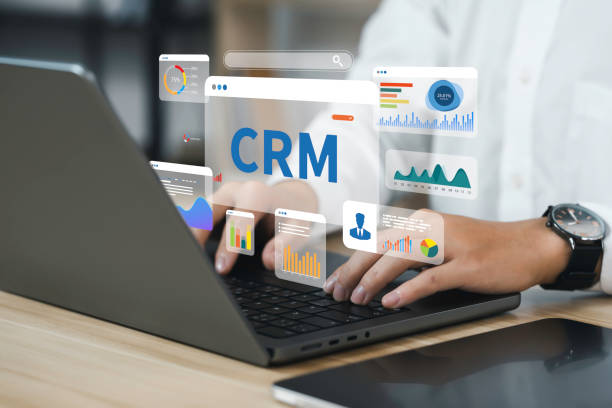
Customer loyalty is no longer just a perk—it’s a strategic necessity. As businesses face rising acquisition costs and fierce competition across industries, retaining customers has become a top priority. In this environment, loyalty automation has emerged as a powerful tool to drive repeat engagement, streamline program management, and increase customer lifetime value.
In 2025, the most successful brands are those that personalize and scale their loyalty programs without burdening their teams. Automation enables that by delivering relevant rewards, timely messages, and personalized experiences, all with minimal manual effort. This shift is redefining how businesses build long-term relationships with their customers.
What Is Loyalty Automation?
Loyalty automation refers to the use of software and technology to automate key aspects of a customer loyalty program. This includes tracking purchases, rewarding behaviors, sending targeted promotions, managing customer tiers, and analyzing engagement data. By automating these processes, companies can efficiently scale their programs while ensuring customers consistently receive value.
Instead of relying on manual updates or generic campaigns, loyalty automation allows businesses to deliver tailored experiences based on individual customer behaviors and preferences. This not only saves time but also enhances the effectiveness of loyalty initiatives.
Why Loyalty Automation Matters in 2025
Modern consumers expect seamless and personalized experiences. They’re more likely to engage with brands that recognize their preferences, shopping history, and loyalty. Loyalty automation helps businesses meet these expectations by:
- Enhancing personalization: Send rewards, messages, or offers based on purchase patterns, birthdays, or customer milestones.
- Increasing operational efficiency: Automate repetitive tasks such as point updates, email notifications, and segmentation.
- Improving customer engagement: Deliver relevant incentives at the right time, increasing the likelihood of repeat purchases.
- Providing real-time insights: Monitor program performance and customer behavior instantly, enabling quick adjustments.
In 2025, brands that fail to automate their loyalty efforts risk falling behind. Manual programs are often inconsistent, difficult to scale, and less effective at engaging customers in real time.
Key Components of Loyalty Automation
Implementing loyalty automation involves several core elements, all of which contribute to a smooth and effective customer experience:
- Behavior Tracking
Automatically monitor customer actions such as purchases, app usage, referrals, and engagement with content. - Reward Distribution
Instantly assign points, discounts, or perks when customers complete certain actions—no manual intervention needed. - Email and SMS Automation
Trigger personalized communications based on customer activity, including abandoned carts, point milestones, and birthday rewards. - Customer Segmentation
Use real-time data to group customers into segments and automate campaigns based on tier, activity level, or preferences. - Performance Analytics
Track KPIs like redemption rates, churn risk, and program ROI using automated dashboards and reports. - Integrations
Connect with e-commerce platforms, CRMs, POS systems, and marketing tools for a unified and automated customer experience.
Benefits of Loyalty Automation
Businesses across industries—retail, hospitality, finance, and more—are embracing loyalty automation for its tangible advantages:
- Scalability: Easily expand loyalty initiatives without increasing manual workload or resource demands.
- Consistency: Ensure every customer receives a timely, branded, and personalized experience.
- Retention and ROI: Automated programs drive better engagement, increasing customer retention and maximizing return on investment.
- Customer Satisfaction: A seamless and rewarding experience builds positive sentiment and deeper brand relationships.
Examples of Loyalty Automation in Action
Here are a few scenarios that show how loyalty automation is transforming customer engagement:
- E-commerce: A customer makes a purchase, triggering an automated email thanking them and updating their loyalty points. If they don’t return in 30 days, another automated message with a special offer is sent.
- Retail: In-store purchases are synced with the customer’s online profile. Based on their buying habits, they’re moved to a higher reward tier and receive an SMS with a personalized discount.
- Subscription Services: Customers are rewarded automatically for milestones like one-year anniversaries or referrals, all managed through an automated loyalty dashboard.
Leading Platforms Offering Loyalty Automation
Several software providers are enabling businesses to implement loyalty automation effectively. Some of the top platforms include:
- LoyaltyLion – Offers powerful automation tools for e-commerce brands using Shopify and BigCommerce.
- Smile.io – Enables automatic rewards, emails, and segmentation for growing online stores.
- Yotpo Loyalty – Integrates loyalty automation with user-generated content and SMS marketing.
- Talon.One – Provides a rules engine for advanced promotional and loyalty automation strategies.
- Annex Cloud – Combines enterprise-level automation with omnichannel loyalty and referral features.
These platforms empower businesses to launch sophisticated programs that run smoothly in the background, allowing teams to focus on strategy and growth.
Getting Started with Loyalty Automation
Implementing loyalty automation doesn’t have to be overwhelming. Here are some steps to get started:
- Set clear goals: Define what success looks like—higher repeat rates, increased average order value, etc.
- Map customer journeys: Understand key moments in the customer lifecycle where automation can make the most impact.
- Choose the right platform: Select a tool that aligns with your business size, industry, and technical needs.
- Start simple: Launch with basic triggers (e.g., post-purchase emails, point accrual) and scale as you gain insights.
- Test and optimize: Use performance data to refine your campaigns and improve engagement over time.
Final Thoughts
In 2025, loyalty automation is no longer a luxury—it’s a competitive advantage. Businesses that invest in smart, automated loyalty programs can drive customer satisfaction, increase retention, and improve their bottom line. By leveraging automation, brands can build meaningful connections at scale, delivering the right message to the right customer at the right time.
Whether you’re running an online store, a brick-and-mortar business, or a hybrid model, loyalty automation is a key driver of customer-centric growth. The future of loyalty is not only digital—it’s automated, intelligent, and deeply personalized.









